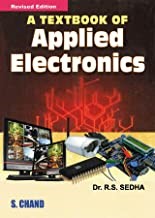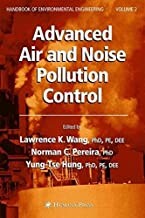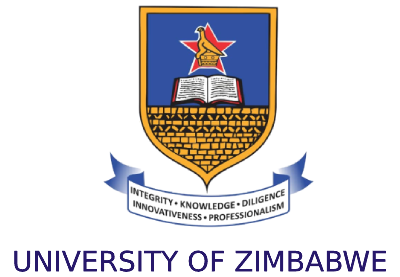Introduction
Welcome to the University of Zimbabwe Library Faculty of Engineering and the Built Environment liaison page. This page has been designed to assist and guide students and staff with information that will support activities associated with teaching, learning, research, community service, innovation and industrialization. The Information Subject Specialist for the Faculty plays a key role in liaison between the Faculty, students and the library. Listed are e-books, e-journals, open access resources, training services, theses, and referencing and citation. You can use this guide to explore resources relating to Engineering and the Built Environment by using the above tabs to find library resources and services.
If you have any questions about the library or need any assistance in finding the
Information you need, please contact me on:
Email: rzidya@uzlib.uz.ac.zw
Phone: +26377598973

Ms Regina Zidya
Location: Map Library
What are Open Access resources?
Open Access refers to resources that are freely available for viewing and/or use. Open Access is part of a continuum ranging from completely closed, subscription/purchase only access to completely open, no barrier publishing. Open Access is not related to the quality of materials or the peer-review/non-peer-review status of the publications.
Open Access materials can be excellent resources to supplement online library materials. Many scholarly and peer-review journals have opened their back issues as open access, and others have converted partially or totally to open access for all issues.
While Open Access materials are, for the most part, still under copyright by their creators, most academic and educational use is permitted without permission.
Selected Open Educational Resources
Open Access Journals Databases
- Directory of Open Access Journals (DOAJ)
- Elsevier A-Z Directory of open access Journals
- Hindawi
- Multidisciplinary Digital Publishing Institute (MDPI)
- SpringerOpen
- Wiley Open Access
Open Educational Books Databases
UZ Open Educational Resources
Training services Tab
- Reference Management-referencing, citation and use of electronic reference management software Mendeley and discipline specific citation styles.
- Literature discovery– identifying research topics; planning and performing a literature review; running effective searches using e-resources and staying up to date with chosen research topic.
- Tools for research Collaboration– using writing collaborative tools such as Google Docs, literature searching collaborative tools like Mendeley, ResearchGate and Academia and using tools for connecting with other researchers.
- Research Impact tracking– Use of citations and alternative metrics to track research impact using tools such as Google Citations and Social Media metrics
- Strategies to increase research visibility and discoverability– how to increase the visibility of research outputs through the use of institutional repositories; sharing preprints, establishing online researcher profiles and using social media for research.
- Publishing in reputable journals– selecting a book publisher and selecting a journal, differentiating predatory, accredited journals, and Open Access routes to getting research output more visible and citable.
- Research Communication– the training equips researchers on how to communicate their research to a broader audience so as to achieve optimum impact of research findings. It also explores the various ways in which research can be shared.
Available trainings can be booked here: https://forms.gle/zkeJRkE1JphNG92f7
Masters and doctoral theses from the Faculty of Engineering and the Built Environment are available in the Special and Digital Collections Section of the Main Library and online through the University of Zimbabwe Institutional Repository (UZ eScholar).
You can also use the direct link to the University of Zimbabwe e-Theses.
The use of appropriate referencing and citation techniques is encouraged for students, researchers and staff so that they can achieve academic integrity by adhering to standards of academic writing and avoiding plagiarism.
Faculty of Engineering and the Built Environment uses the Harvard Citation Style. There are many variations of the Harvard referencing style. The Library trains using the Harvard cite them right edition. Visit the link below for an introduction to Harvard (Cite them right) referencing style:
https://www.citethemrightonline.com/
For individual or group sessions on using the citation style, book an appointment with the Subject Information Specialist on the email: amazhude@uzlib.uz.ac.zw
Online Reference Management
Students and staff can receive training on using Mendeley from Faculty Subject Information Specialist. Mendeley is an open source reference management software used to manage to manage referencing and citation. With Mendeley Reference Manager you can store, organise and search all your references from just one library.
This reference manager and academic social network, collaborate with others online, find relevant papers based on what you are reading and discover the latest research.
Visit the following link for a guide on how to use Mendeley
https://www.mendeley.com/guides/mendeley-cite
A Getting started with Mendeley video tutorial is also available on YouTube for your assistance.
For training you can book an appointment on the email provided below:
Featured books in our Print collection
|
A textbook of Machine Drawing by Dhawan, R.K. Call Number: TJ230 DHA |
Fundamentals of structural analysis with computer analysis and applications by Roy Sujit Kumar and Chakrabarty Subrata
Call Number: TA 645 ROY
|
|
Principles of Electrical Engineering and Electronics by Mehta V.K and Mehta Rohit Call Number: TX 145 MEH |
Rock Mechanics for Underground mining by Brady B.H.G and Brown E.T
Call Number: TA 706.B73 BRA
|
|
Mechanical engineering( Conventional and objective type) by Khurmi R.S and Gupta J.K Call Number: TJ 159 KHU
|
Principles of hazardous marials management 2nd edition By Roger D. Griffin
Call Number: TD1040.G75 ROG
|
|
Handbook of chemicals and safety by Dikshith T.S.S
Call Number: TP 150 S.24 DIK
|
Thermodynamics: An engineering approach by Yunus A Cengel and Michael A Boles
Call Number: TJ 265 CEN
|
E-Resources
Faculty specific Resources
Faculty of Engineering and the Built Environment
Below are faculty specific resources i.e. e- journals and e-books that are available and accessible via the University of Zimbabwe library website. Visit the link library.uz.ac.zw to view and use the resources.
Click on any of the databases listed in order to start accessing e-journals and e-books available for the Faculty Engineering and the Built Environment
| E-journal Databases | E-book Databases | ||
|
Access To Research for Development and Innovation (ARDI)
|
|
For remote access please log in here: https://uz.remotexs.co
 |
Call Number: TK7816 SED For close to 30 years, “A Textbook of Applied Electronics” has been a comprehensive text for undergraduate students of Electronics and Communications Engineering. The book comprises of 35 chapters, all delving on important concepts such as structure of solids, DC resistive circuits, PN junction, PN junction diode, rectifiers and filters, hybrid parameters, power amplifiers, sinusoidal oscillators, and time base circuits. In addition, the book consists of several chapter-wise questions and detailed diagrams to understand the complex concepts of applied electronics better. |
 |
Call Number TD170.H37 ADV Leading pollution control educators and practicing professionals describe how various combinations of different cutting-edge process systems can be arranged to solve air, noise, and thermal pollution problems. Each chapter discusses in detail a variety of process combinations, along with technical and economic evaluations, and presents explanations of the principles behind the designs, as well as numerous variant designs useful to practicing engineers. |
 |
Building surveys / GloverPeter 2022 Call Number: TH439 GLO Building Surveys has been a trusted guide for both students and professionals for nearly 40 years, evolving throughout its nine editions to address the challenges and responsibilities of the building surveying role. It covers everything needed for initial inspections such as equipment, know-how and procedures to writing an accurate report, making it indispensable to those practising in or studying this field.
|
 |
Construction project management / Gould, Frederick E, and Joyce, Nancy1999 TH438 GOU This book is designed to give the reader important information of construction management in a very basic way. If you are a beginner in the construction business you cannot go wrong with this book.
|
 |
Environmental instrumentation and analysis handbook /edited by Down, Randy D Lehr, Jay H,(2004) Call number TD193.E565 ENV A comprehensive resource for information about different technologies and methods to measure and analyse contamination of air, water, and soil. Serves as a technical reference in the field of environmental science and engineering. * Includes information on instrumentation used for measurement and control of effluents and emissions from industrial facilities that can directly influence the environment |
 |
Introduction to food engineering / R. Paul Singh, Dennis R. Heldman. 2014 Call Number: TP370 SIN Long recognized as the bestselling textbook for teaching food engineering to food science students, this 5e transitions with today’s students from traditional textbook learning to integrated presentation of the key concepts of food engineering. Using carefully selected examples, Singh and Heldman demonstrate the relationship of engineering to the chemistry, microbiology, nutrition and processing of foods in a uniquely practical blend. This approach facilitates comprehensive learning that has proven valuable beyond the classroom as a lifetime professional reference. |
 |
Introductory mining engineering /Hartman, Howard L and Mutmansky, Jan M. 2002 Call Number:TN275.H35 HAR Introductory Mining Engineering outlines the role of the mining engineer throughout the life of a mine, including prospecting for the deposit, determining the site’s value, developing the mine, extracting the mineral values, and reclaiming the land afterward. This Second Edition is written with a focus on sustainability-managing land to meet the economic and environmental needs of the present while enhancing its ability to also meet the needs of future generations. |
 |
Irrigation engineering / Raghunath, H. M2011 Call numberTC805 RAG Irrigation Engineering is designed for the undergraduate students of civil engineering. The content is divided into two parts: Part A and Part B. Part A contain 21 chapters. In this part, the author has discussed various irrigation systems usually adopted in different agro-climatic regions in India. With neatly-drawn sketches, the design of irrigation structures for storage, diversion, distribution and control are illustrated with exam-oriented worked-out examples. Part B of the book comprises 27 irrigation/hydraulic structures (called plates), presenting sketches with usual three-views to scale of dams, spillways, canals and cross-drainage works. |
 |
Mining and the environment : from ore to metal / Spitz, Karlheinz, and Trudinger, John 2008 Call Number: TN275 SPI This book identifies and discusses the wide range of social and environmental issues pertaining to mining, with particular reference to mining in developing countries from where many of the project examples and case studies have been selected. Following an introductory overview of the issues of concern, the book illustrates how environmental impact assessment as defined in “The Equator Principles”, integrates with the mining lifecycle, and how environmental assessment aims to eliminate the negative and to accentuate the positive mining impacts. |
 |
Planning and urban design standards / Steiner, Frederick R 2006 Call Number: TH2031 STE Planning and Urban Design Standards, Student Edition is the authoritative and reliable volume designed to teach students best practices and guidelines for urban planning and design. |
 |
Call Number: TK2411 MEH Succinctly divided in 14 chapters, the book delves into important concepts of the subject which include Armature Reaction and Commutation, Single-phase Motors, Three-phase Induction motors, Synchronous Motors, Transformers and Alternators with the help of numerous figures and supporting chapter-end questions for retention. |
 |
Rock mechanics: for underground mining / Brady, B. H. G. Brown, E. T. 2007 Call Number TA706.B73 BRA This new edition reflect the notable innovations in mining engineering and the remarkable developments in the science of rock mechanics and the practice of rock engineering that have taken place over the last two decades.. Based on extensive professional research and teaching experience, this book will provide an authoritative and comprehensive text for final year undergraduates and commencing postgraduate students. |
 |
Thermodynamics : an engineering approach/ Yunus A. Cengel and Boles, Michael 2013 Call Number: TJ265 CEN Very useful for an Engineering Undergraduate covers (Heat) engine cycles, quite a bit of basic knowledge in the book to get you up to speed. Lots of examples and it’s explained very well. |
 |
Transportation engineering and planning / C.S. Papacostas, P.D. Prevedouros 2000
Call number: TA1145 PAP This detailed, interdisciplinary introduction to transportation engineering is ideal as both a comprehensive tutorial and reference. Begins with the basic sciences, mathematics, and engineering mechanics, and gradually introduces new concepts concerning societal context, geometric design, human factors, traffic engineering, and simulation, transportation planning, evaluation. For prospective and practicing transportation engineers. |
